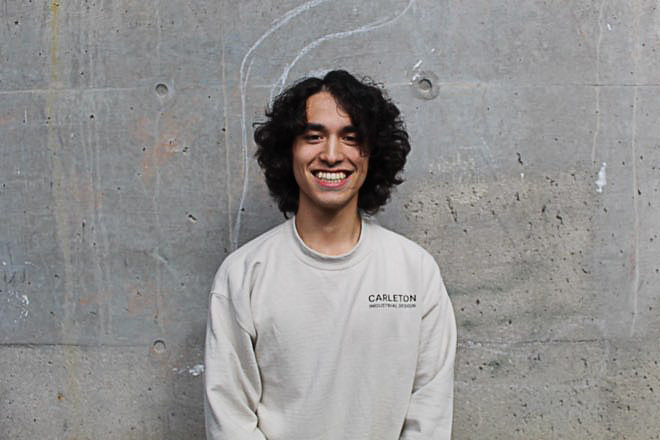
Alexander Mossdorf, a third-year industrial design student at Carleton University, recently won third place for his industrial design at the Housewares Association’s 31st Student Design Competition.
Mossdorf’s innovative design, titled The Mode, stood out among the competition’s record-breaking 358 entries from 31 schools around the world.
The winners will showcase their products at the Inspired Home Show from March 17 to 19 at McCormick Place in Chicago.
The Charlatan sat down with Mossdorf to discuss his award-winning design and the importance of sustainability, health and the environment in industrial design.
The Charlatan (TC): Tell me about your design, The Mode.
Alexander Mossdorf (AM): The product is an air quality appliance for those who have their own home workshops. It’s kind of a two-in-one product. It has air filtration qualities as well as shop vacuum qualities. A dial on top of the product allows you to switch between air quality improvement and shop vacuum. You can control the intensity of the fan so you can prioritize how much volume of air you want. Since radial fans can be quite loud and aggressive, if you just want it to passively run in the background without disturbing you, it can do that.
TC: Tell me about your experience in the Housewares Design Competition.
AM: Applying to this competition was a project requirement that our professor gave us, so everyone in the class did it. I didn’t quite expect this outcome. Both of my parents are doctors, so I hear about air filtration often. I spend a lot of time in the workshop, and I find I end up breathing in a lot of wood dust or foam dust. I figured there was a way for users who have home workshops who don’t have an integrated ventilation system to better the air quality and their physical health.
TC: Walk me through the creative process for your design.
AM: Since I wanted to pursue a product that could have air filtration qualities and shop vacuum qualities, I wanted to try to create a dual intake system with separate intakes for different functions of the product.
I wanted to set the scale to one foot by one foot, as I found that filters within those dimensions are very common and accessible to people. I really wanted to encourage flexibility in the design. I used a radial fan, which prioritizes a larger amount of air displacement as opposed to speed or suction force. This was specifically beneficial for a filtration device but also comes in handy for a shop vacuum.
I wanted to design vacuum wheels with treads specifically able to go over its own power cord so it doesn’t trip over itself. I also wanted to implement both a filter bag and a square filter. Using a filter bag would prolong the lifespan of the product, such as by reducing the amount of particles out of the square filter, and they’re easier to replace and consume fewer resources.
TC: How do sustainability, the environment and health intersect with your design?
AM: The focus of my design was a user-centred approach to improving health. I found that the health quality of people who own their own home workshops without ventilation systems suffers when they work excessively in these shops. Fine particulates can enter the lungs, which can be pretty damaging over the long term.
In terms of sustainability, I tried to address that with the dual-filter setup because panel filters (filter bags) can be very costly to replace environmentally and for the wallet. The filter bags are a bit thinner, they catch the majority of particulates that are larger than one micrometre, which increases the lifespan of the panel filter quite a bit. I’ve recently made some mockups for the design that included a variation including recycled microplastics in the housing as well as a cardboard packaging concept, which would include recycled plastics with a wrapped paper label.
TC: Do you have any role models or inspirations in industrial design?
AM: My professor, Rob Watters. He pushed me into this direction quite a bit. He showed me I was capable of doing things I wasn’t sure I was capable of before this project came along. My parents also helped. Though they are not designers, they are creative minds. They gave me a lot of input on how I could go about this project while prioritizing the user.
TC: What’s so important about including sustainability, health and the environment in design?
AM: Sustainability is becoming a topic that’s more and more prevalent in industrial design. A lot of people have to consider what they are putting out into this world because many designs are not being properly recycled or could be done better. That includes the very end when it starts to break down. I think when a designer designs a product, they have to keep in mind the entire lifecycle of the product.
This interview has been edited for length and clarity.





